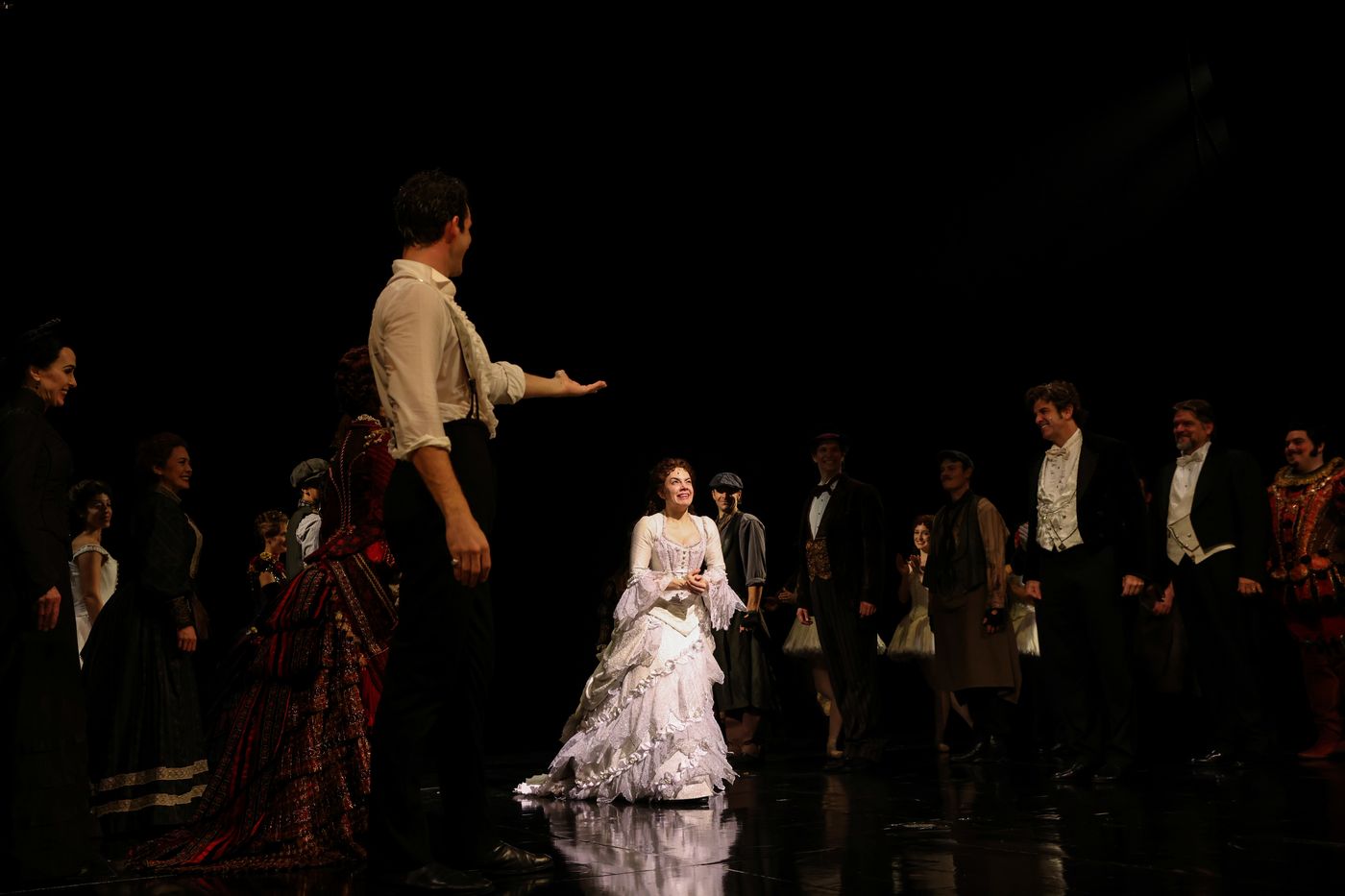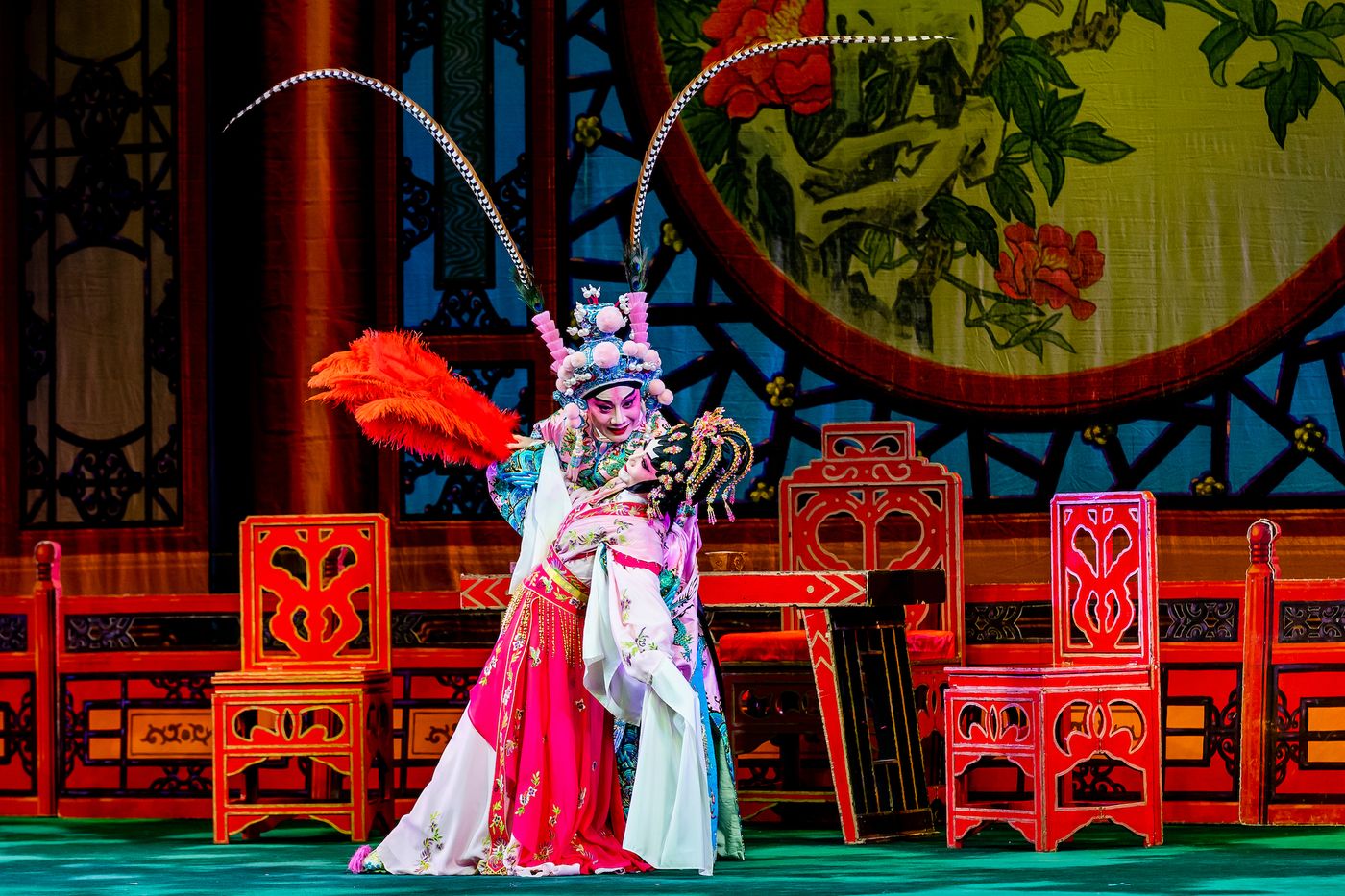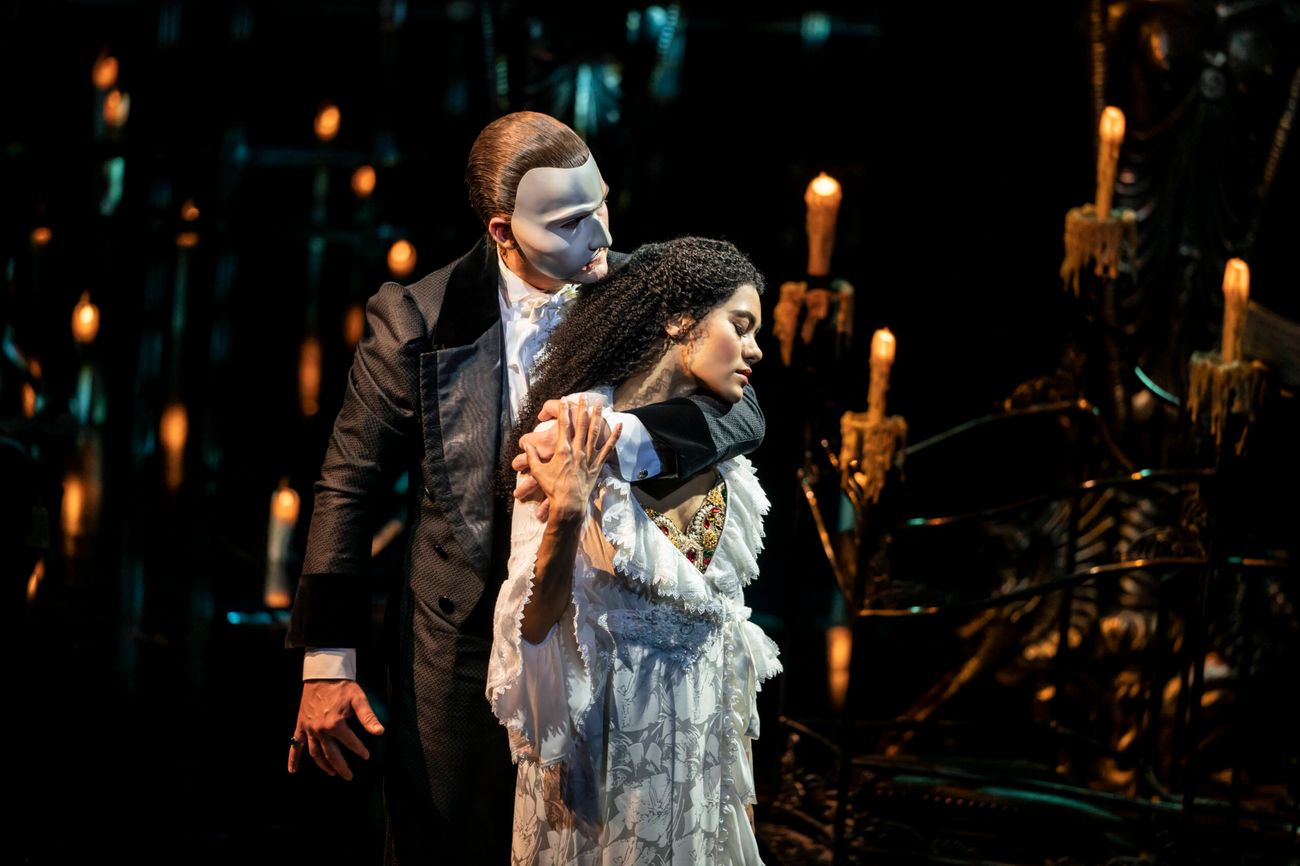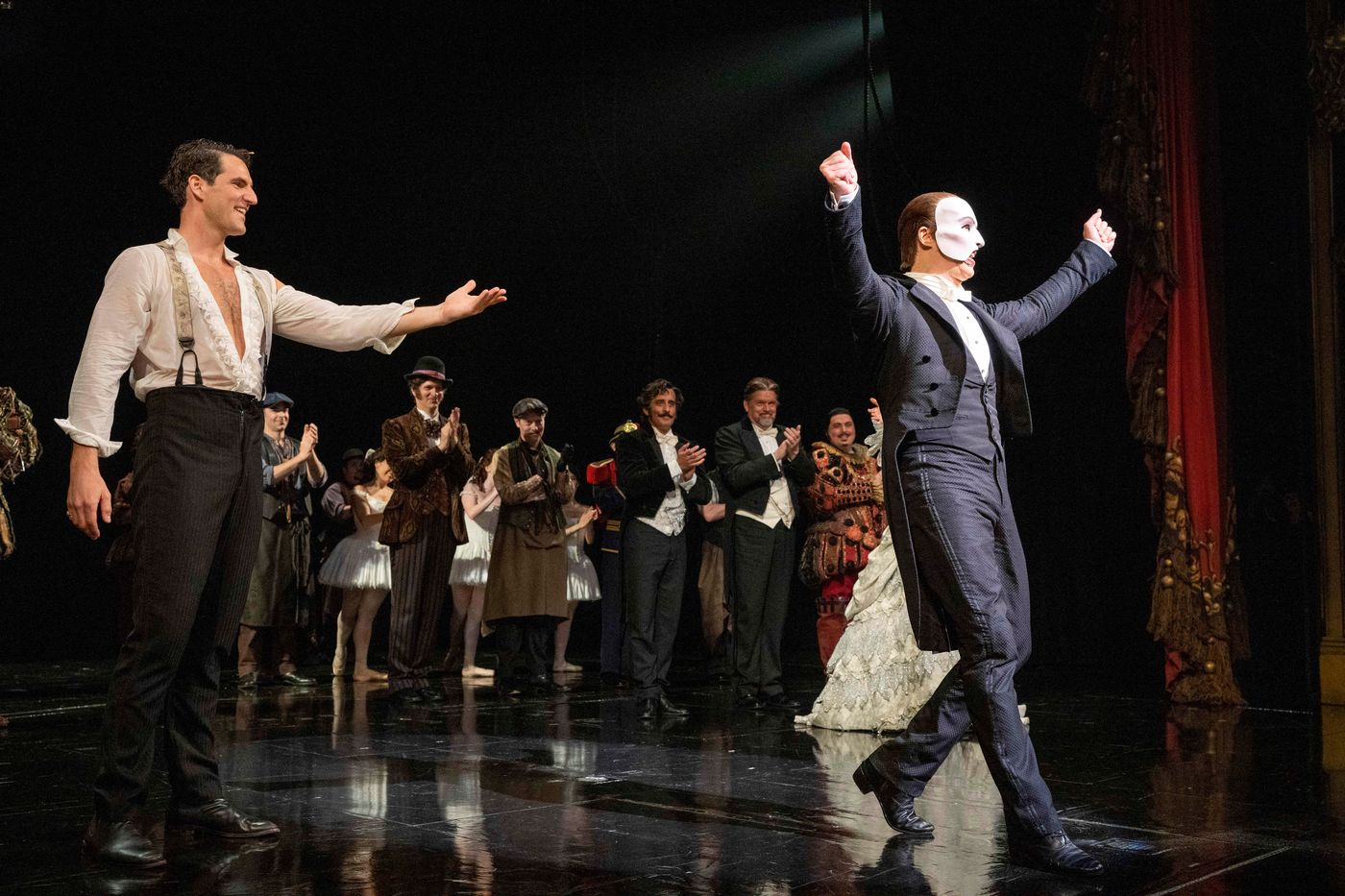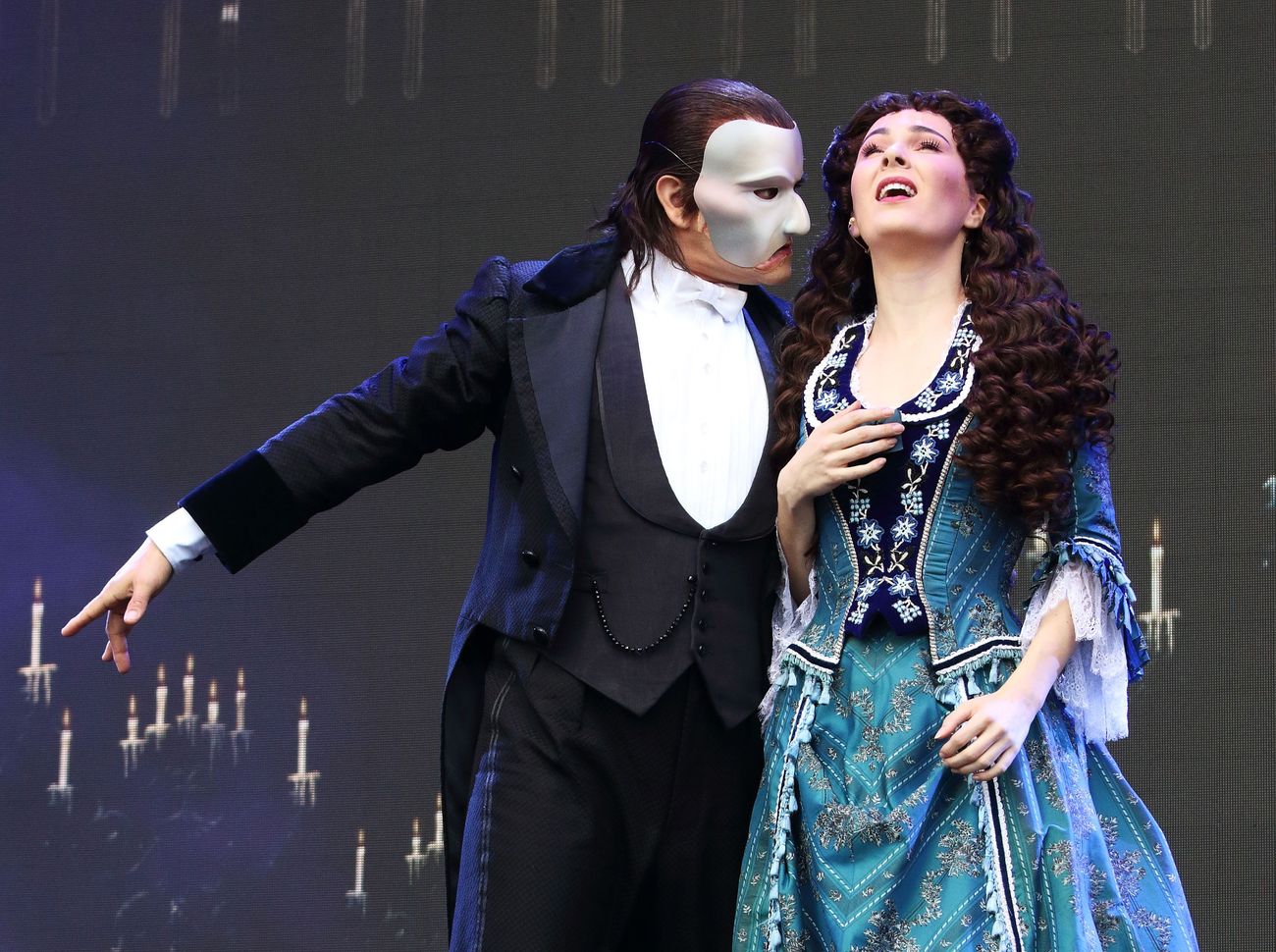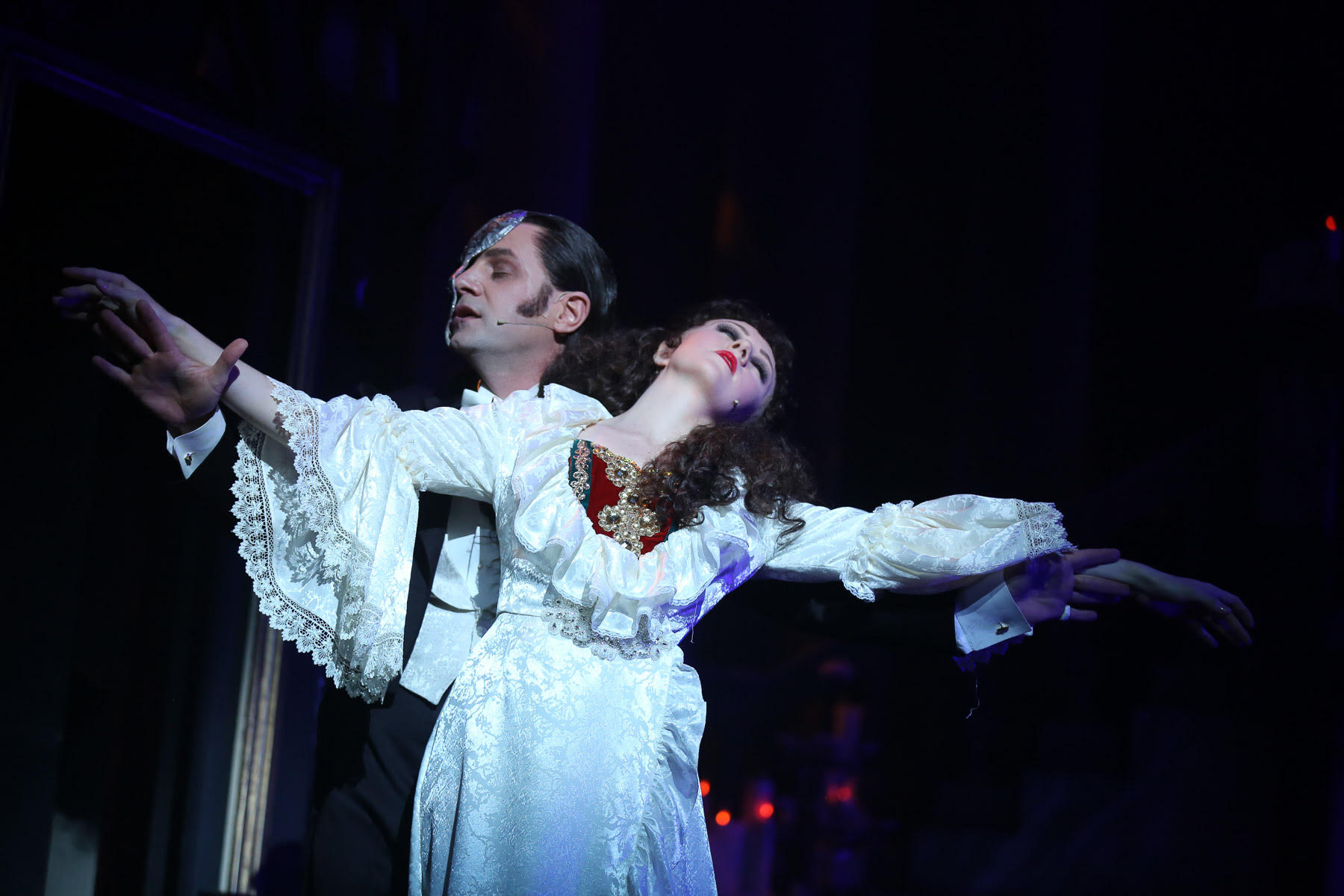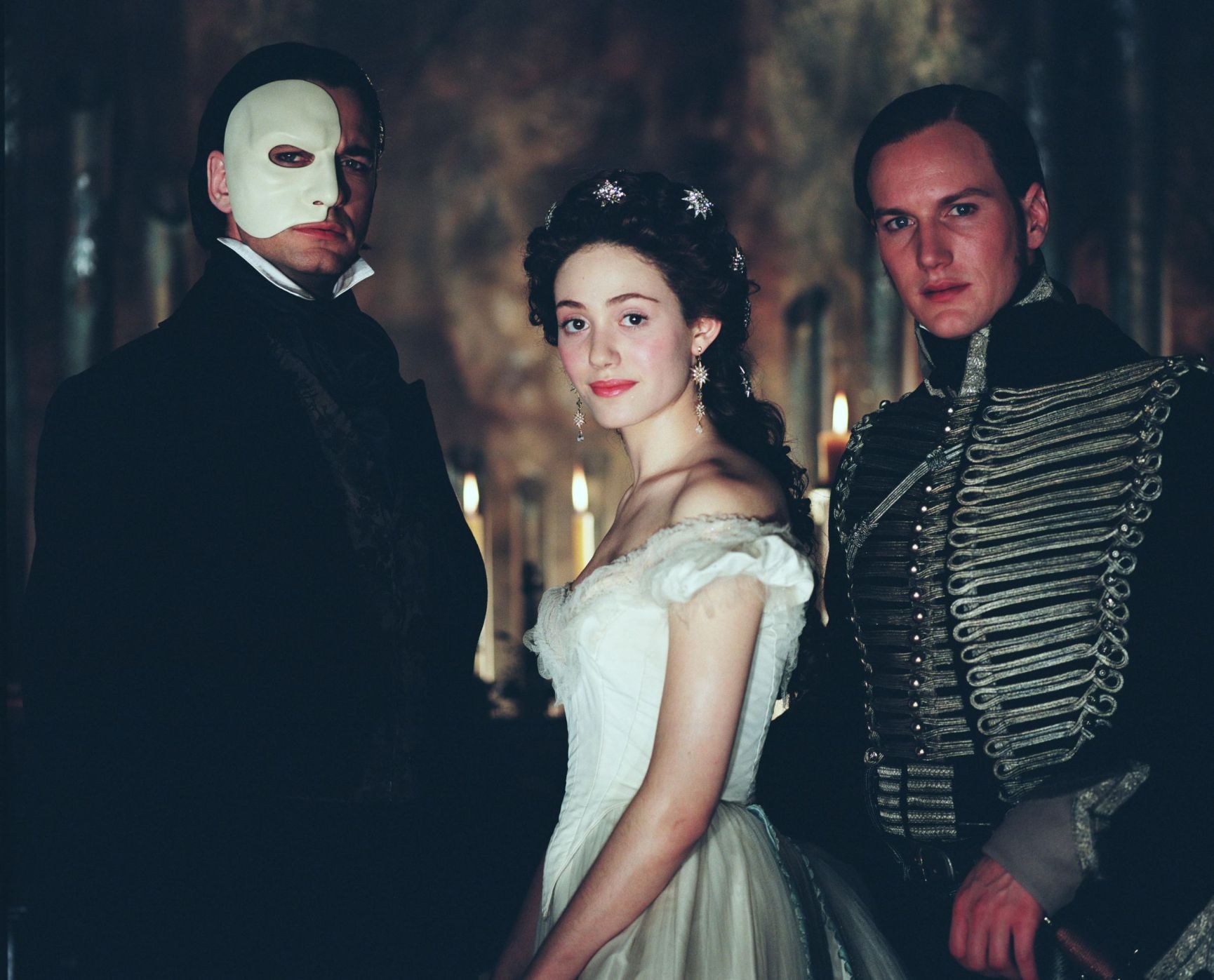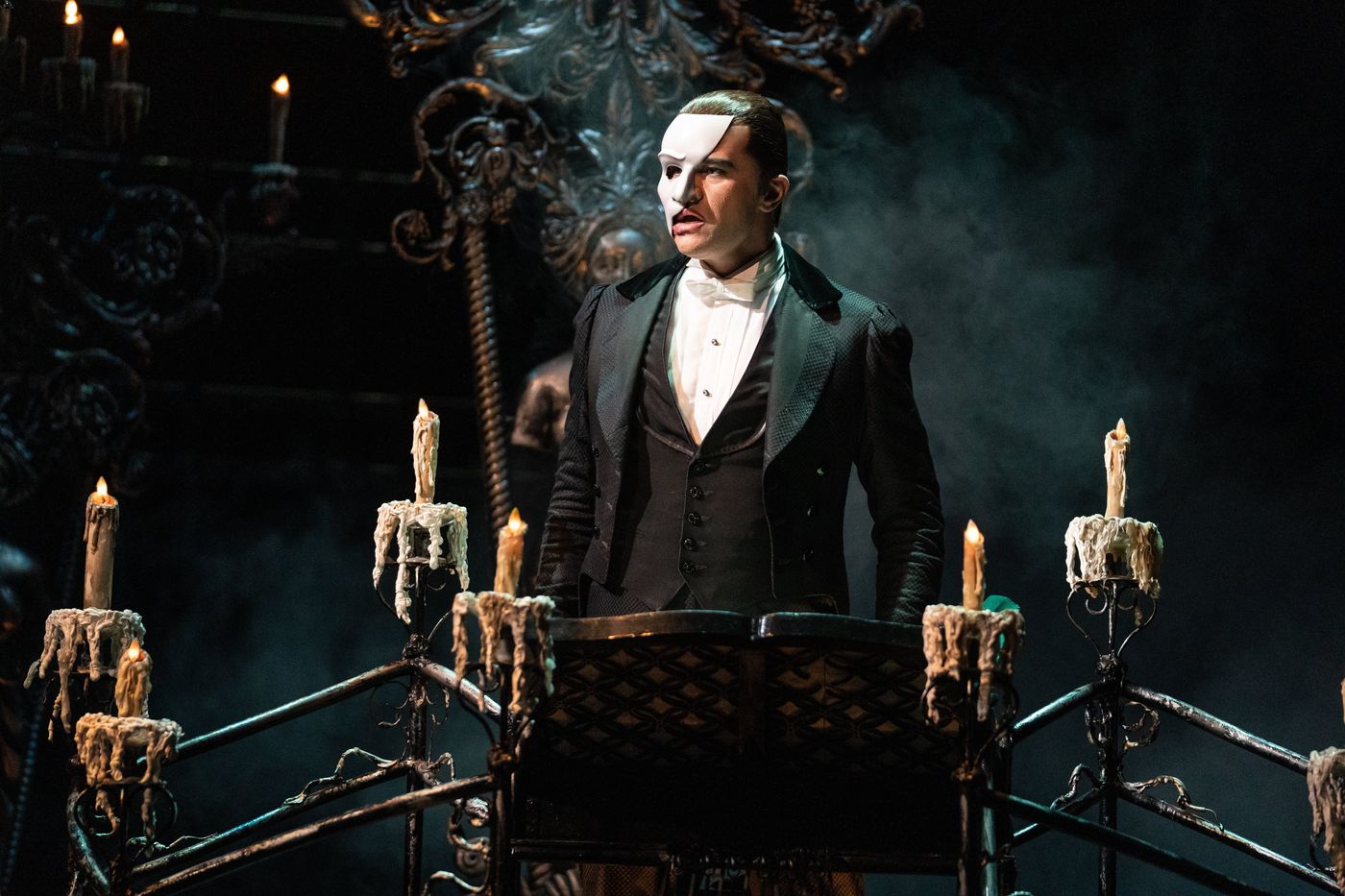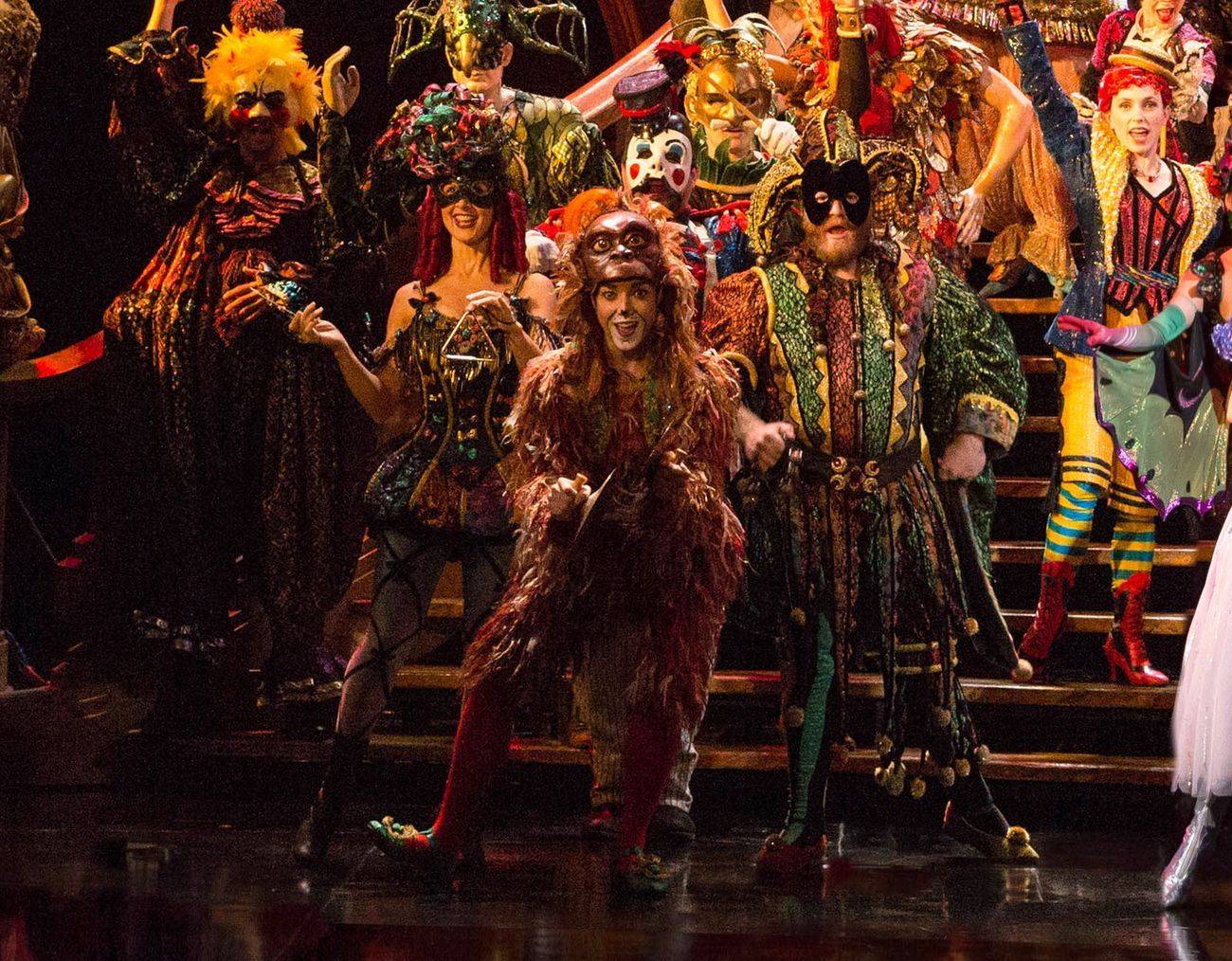Home>Events & Info>Opera>How Old Is The Phantom In Phantom Of The Opera
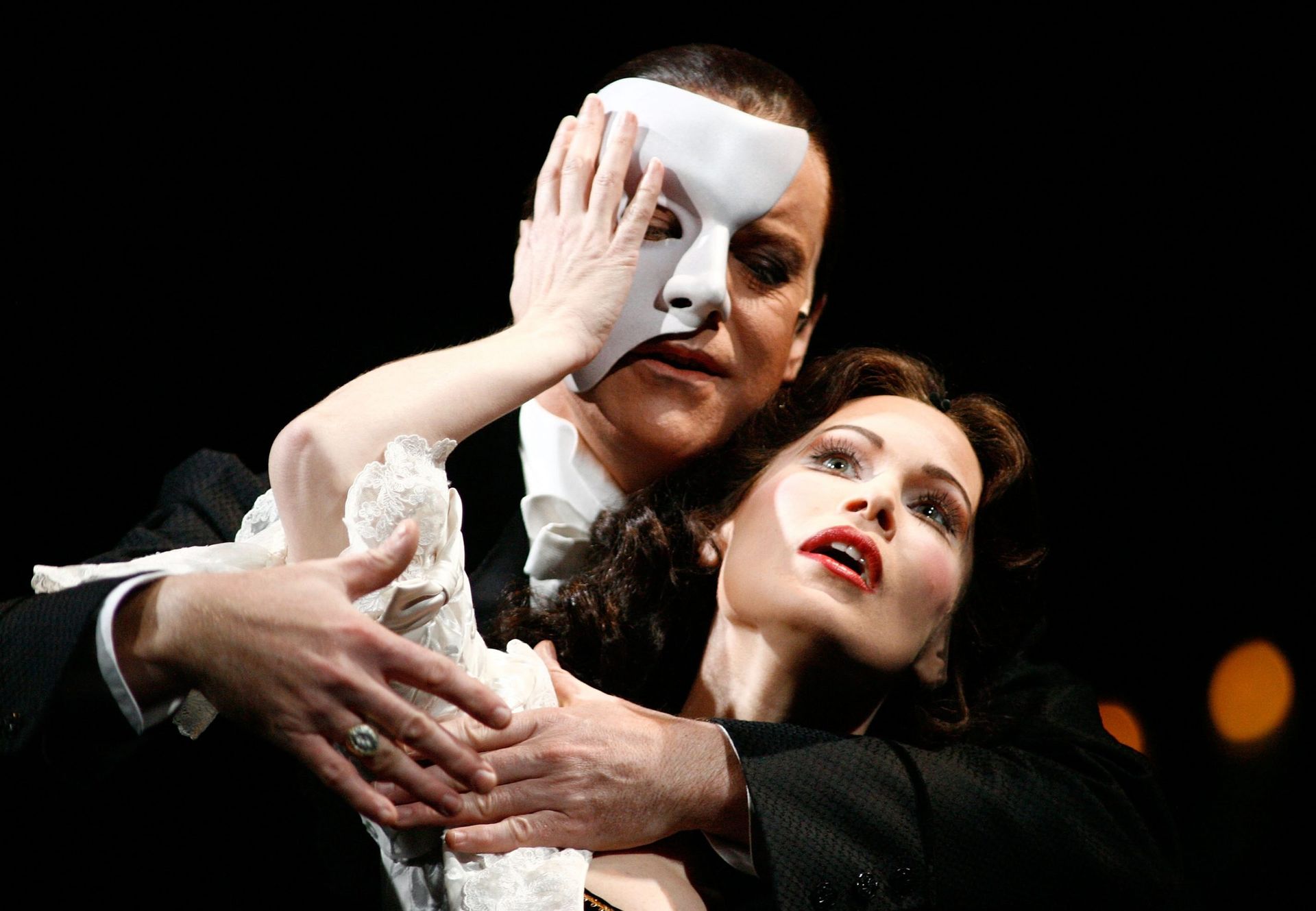

Opera
How Old Is The Phantom In Phantom Of The Opera
Modified: January 22, 2024
Discover the age of the enigmatic phantom in the timeless opera, "Phantom of the Opera." Unveil the secrets behind this captivating character and delve into the world of opera.
(Many of the links in this article redirect to a specific reviewed product. Your purchase of these products through affiliate links helps to generate commission for AudioLover.com, at no extra cost. Learn more)
Table of Contents
Introduction
When it comes to the world of opera, few stories have captured the imagination and hearts of audiences quite like “The Phantom of the Opera.” This timeless tale of love, mystery, and tragedy has enthralled readers, theatergoers, and fans around the globe for over a century.
But amidst the enchanting music and captivating performances, one question has lingered in the minds of fans: How old is the Phantom?
Understanding the age of the Phantom is no easy task, as different versions and adaptations of the story have presented varying interpretations. From the original novel by Gaston Leroux to Andrew Lloyd Webber’s iconic musical, each version offers its own insights into the age of this enigmatic character.
In this article, we will delve into the background of “The Phantom of the Opera,” explore the origins of the character, and examine the age interpretations across different adaptations. We will also take a closer look at Andrew Lloyd Webber’s musical interpretation and some intriguing fan theories surrounding the age of the Phantom.
So, whether you are a long-time fan of the story or new to the mesmerizing world of “The Phantom of the Opera,” prepare to uncover the fascinating mystery of the Phantom’s age and discover the depths of this iconic character.
Background of “The Phantom of the Opera”
“The Phantom of the Opera” is a captivating tale that originated from the pen of French author Gaston Leroux. Published in 1910, Leroux’s novel tells the story of a disfigured musical genius, known as the Phantom, who haunts the Paris Opera House.
The story revolves around the Phantom’s obsession with a young soprano named Christine Daaé, and the complex love triangle that unfolds between Christine, the Phantom, and Raoul, the Vicomte de Chagny. It explores themes of beauty, love, loneliness, and the power of music.
Leroux’s novel combined elements of mystery, romance, and horror, immersing readers in a thrilling narrative that left them both bewitched and terrified. The novel’s popularity quickly spread, and “The Phantom of the Opera” became a beloved classic of gothic literature.
Over the years, the story of the Phantom has been adapted and reimagined in various forms, including films, stage productions, and Andrew Lloyd Webber’s iconic musical. Each adaptation brings its own unique perspective and interpretation of the characters, including the age of the elusive Phantom.
The Phantom’s age is a crucial aspect of his character, as it contributes to his tragic backstory and the mystery surrounding his actions. Determining his age accurately requires analyzing the original novel, as well as considering the creative choices made in different adaptations.
Now that we understand the background of “The Phantom of the Opera,” we can begin to explore the intriguing origins and first appearance of this mesmerizing character.
Origins and First Appearance
The origins of the Phantom can be traced back to Gaston Leroux’s novel, “The Phantom of the Opera.” In the novel, the Phantom makes his first appearance as a mysterious figure lurking beneath the depths of the Paris Opera House.
According to the book, the Phantom was believed to be born with a disfigured face, covered in a white mask to hide his deformity. Leroux describes him as a musical genius who hides in the shadows, manipulating the opera house and its inhabitants to his will.
The novel reveals that the Phantom has an intricate underground lair filled with secret passages and traps. From this hidden sanctuary, he exercises control over the opera house, claiming it as his domain. He demands an underground lake, where he spends his time composing hauntingly beautiful music.
Throughout the story, the Phantom becomes infatuated with Christine Daaé, a talented young soprano. It is through his interactions with Christine that his character deepens and his obsession with her talent and beauty intensifies.
It is important to note that Leroux did not explicitly mention the age of the Phantom in his novel. This omission allows for different interpretations and adaptions to play with the character’s age to suit their artistic vision.
It was in Gaston Leroux’s novel that the character was introduced to the world, captivating readers with the enigmatic and tragic figure of the Phantom. From there, the story was brought to life on stage and screen in various adaptations that gave rise to different interpretations of the character’s age.
Now that we have explored the origins and first appearance of the Phantom in Gaston Leroux’s novel, let’s delve into how his age has been interpreted in various adaptations of the story.
The Phantom’s Age in Gaston Leroux’s Novel
In Gaston Leroux’s novel, “The Phantom of the Opera,” the author does not explicitly mention the age of the Phantom. This lack of clarity has allowed for various interpretations and speculations regarding the character’s age.
While the novel does provide details about the Phantom’s past and his experiences in the Paris Opera House, it does not offer a specific timeline or indication of how long he has been living there. This ambiguity adds to the allure and mysterious nature of the character.
However, there are some assumptions that can be made based on the events and context provided in the novel. Leroux describes the Phantom as having a deep knowledge of the opera house’s architecture, secret passages, and hidden rooms. This suggests that he may have spent a significant amount of time studying and exploring the premises.
Additionally, the Phantom’s obsession with Christine Daaé and his desire to be recognized as her mentor and protector indicates a certain level of maturity and experience. This suggests that he could be older than Christine, who is depicted as a young and rising star in the novel.
While Leroux’s novel does not explicitly state the age of the Phantom, it offers glimpses into the character’s complex psyche and tragic backstory. The lack of a concrete age adds to the enigma surrounding the Phantom, allowing readers to interpret his age in a way that resonates with them while immersing themselves in the haunting world of the story.
Now that we have examined the age ambiguity in Gaston Leroux’s original novel, let’s explore how the age of the Phantom has been interpreted in different adaptations of “The Phantom of the Opera.”
Age Interpretations in Different Adaptations
As the story of “The Phantom of the Opera” has been adapted and reimagined in various forms, different interpretations of the Phantom’s age have emerged. Each adaptation takes creative liberties in presenting the character’s age, giving their own unique spin to his backstory and motivations.
In some adaptations, such as the 1925 silent film starring Lon Chaney, the Phantom is portrayed as an older man. This portrayal emphasizes his tragic past and the toll it has taken on him over the years. The age difference between the Phantom and Christine is accentuated, adding to the complexity of their relationship.
Other adaptations, like the classic 1986 Andrew Lloyd Webber musical, take a different approach and present the Phantom as a younger man. In this interpretation, the age difference between the Phantom and Christine is reduced, heightening the intensity of their connection and emphasizing the symphony of emotions that they share.
Furthermore, some adaptations choose to keep the age of the Phantom intentionally ambiguous, drawing on the mystique and allure of the character. By leaving his age open to interpretation, these adaptations allow viewers and readers to form their own perceptions of the character, deepening their engagement with the story.
It’s worth mentioning that each interpretation of the Phantom’s age brings its own unique perspective and adds depth to the character. Whether portrayed as an older, tortured soul or a younger, passionate artist, the age interpretations in different adaptations help shape the dynamic between the Phantom, Christine, and the world they inhabit.
Now that we have explored how the Phantom’s age has been interpreted in different adaptations, let’s delve into Andrew Lloyd Webber’s musical interpretation and its impact on the character’s age perception.
Andrew Lloyd Webber’s Musical Interpretation of the Phantom’s Age
One of the most popular and well-known adaptations of “The Phantom of the Opera” is Andrew Lloyd Webber’s iconic musical. In this version, the age of the Phantom is presented in a way that differs from other interpretations.
In Andrew Lloyd Webber’s musical, the Phantom is portrayed as a middle-aged man. This choice adds an extra layer of complexity to the character, emphasizing the years he has spent hidden beneath the Paris Opera House.
The age difference between the Phantom and Christine is significant in the musical, highlighting the power dynamics and the contrasting life experiences of the characters. It also adds a sense of tragedy to their relationship, as the Phantom’s unrequited love for Christine becomes intertwined with his own sense of loneliness and longing.
Webber’s musical places a heavy emphasis on the Phantom’s musical genius and his role as a mentor and composer. By presenting him as a middle-aged man, the musical amplifies the notion that the Phantom has spent a significant portion of his life honing his craft and seeking artistic recognition.
This aging interpretation of the Phantom also ties into the themes of missed opportunities and unfulfilled desires. As a seasoned artist yearning for acceptance, the Phantom’s age becomes symbolic of his struggle to find his place in a world that has rejected him due to his physical appearance.
Andrew Lloyd Webber’s musical interpretation of the Phantom’s age has had a profound impact on the perception of the character. It has contributed to the depth and emotional resonance of the story, ensuring that audiences connect with the complexities and vulnerabilities of the Phantom’s journey.
Now, with an understanding of Andrew Lloyd Webber’s musical interpretation of the Phantom’s age, let’s explore some intriguing fan theories that have emerged surrounding this enigmatic character.
Fan Theories about the Phantom’s Age
Throughout the years, passionate fans of “The Phantom of the Opera” have developed various theories regarding the age of the mysterious character. These theories stem from careful analysis of the source material, clues within different adaptations, and personal interpretations.
One popular fan theory suggests that the Phantom is immortal or has prolonged his life through dark magic or supernatural means. This theory is supported by instances in some adaptations where the Phantom demonstrates incredible longevity and an extensive knowledge of historical events.
Another theory posits that the Phantom is trapped in a timeless realm or alternate dimension, existing outside the bounds of conventional time. This would explain his eternal presence and ability to manipulate events throughout different time periods and adaptations.
Some fans speculate that the Phantom is a ghost or a spirit that haunts the Paris Opera House. This theory draws upon the Phantom’s ethereal qualities, his supernatural abilities, and his innate connection to the opera house itself.
There are also theories that link the Phantom’s age to his association with music and his connection to the power of music itself. These theories suggest that the Phantom’s age is fluid, influenced by his artistic prowess and the intensity of his emotions.
It’s important to note that fan theories about the Phantom’s age are not officially confirmed within the canon of the story. However, they serve as captivating interpretations that add an extra layer of intrigue for fans who are captivated by the character’s enigmatic nature and depth.
As fans delve into the rich tapestry of “The Phantom of the Opera,” these theories continue to spark discussion and fuel the imagination, allowing audiences to form their own understandings of the age and essence of this iconic character.
Now, armed with an exploration of fan theories, let’s conclude our journey into the age of the Phantom in “The Phantom of the Opera.”
Conclusion
The age of the Phantom in “The Phantom of the Opera” has been a subject of intrigue and speculation for fans of the story. From Gaston Leroux’s original novel to Andrew Lloyd Webber’s musical adaptation, the age interpretations of this enigmatic character have varied across different mediums.
Gaston Leroux’s novel deliberately leaves the age of the Phantom open to individual interpretation, allowing readers to imagine the depths of his tragic backstory and the experiences that have shaped him. This ambiguity adds to the compelling nature of the character, drawing us into his haunting world.
Throughout adaptations, the Phantom’s age has been depicted in different ways to suit the creative vision of each interpretation. Some portray him as an older man, emphasizing the weight of his past and the contrast between him and the young Christine. Others present him as a middle-aged figure, exploring themes of missed opportunities and artistry that has matured over time.
Meanwhile, fan theories have emerged, suggesting supernatural elements, eternal existence, or the connection between the Phantom’s age and the power of music. These theories allow fans to delve deeper into the mysteries of the character and further connect with the intricacies of his story.
In the end, the age of the Phantom remains a captivating enigma, inviting us to explore the depths of his emotions, the complexities of his relationships, and the profound impact of his haunting presence. Whether young or old, immortal or finite, the age of the Phantom adds to the timeless allure of “The Phantom of the Opera.”
So, as you revisit the world of the Phantom, let your imagination soar and embrace the ethereal brilliance of this iconic character, for his age may forever remain an enigmatic secret, adding dramatic depth and timeless fascination to the enthralling tale of “The Phantom of the Opera.”

